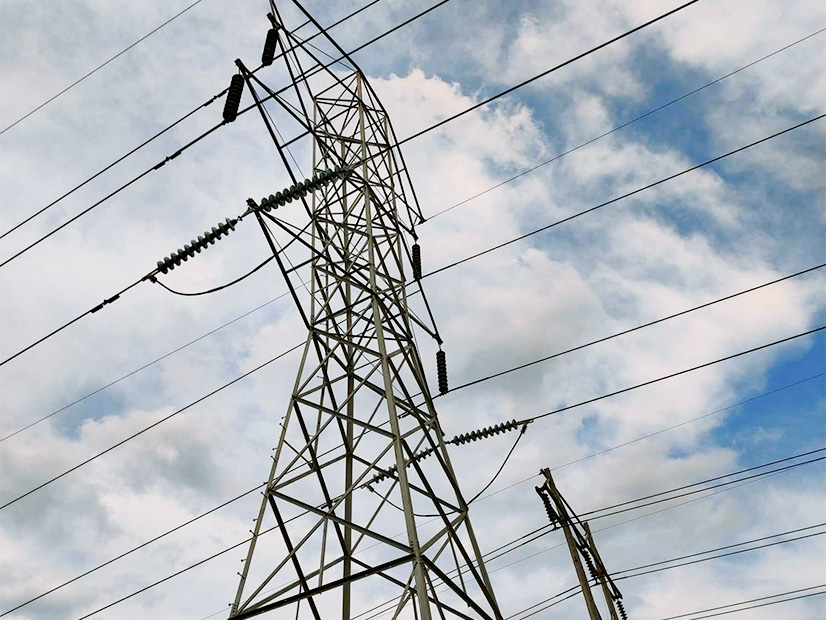CARMEL, Ind. — Stakeholders still are requesting that MISO develop a smaller, congestion-relieving transmission study after this year’s near-term congestion study focused solely on how best to sequence transmission outages needed for construction of recently approved long-range transmission projects.
Earlier this year, MISO pivoted its inaugural informational near-term congestion study under the 2024 Transmission Expansion Plan (MTEP 24) to evaluate the impacts of planned outages that will be necessary to build the first round of long-range transmission plan (LRTP) projects.
Stakeholders originally asked that MISO develop a process for smaller, congestion-relieving transmission projects like the Targeted Market Efficiency Project (TMEP) study it has with PJM. MISO, however, announced it would focus on the outages necessary for construction of the first, $10 billion LRTP.
MISO expects the bulk of outages to span from 2026 to 2028 and said it will be a complex task to schedule combinations of outages to minimize congestion costs. It estimates the system will experience about 220 outages related to LRTP construction, with half of those occurring in 2027. That’s in addition to the usual number of forced and planned transmission outages. MISO said it used random planned and forced outages to simulate system conditions.
At a Nov. 13 Planning Advisory Committee meeting, MISO confirmed that the outages will likely drive up adjusted production costs. In a worst-case scenario, construction delays and added curtailments could tack on $57.97 million to production costs.
Iowa’s ongoing court battle over who can build LRTP lines also could drag down the benefit, depending on how long the delay lasts. An Iowa district court last year froze permitting processes on Iowa’s portion of five of MISO’s LRTP projects after it found the state’s right-of-first-refusal law — which gave incumbent utilities first dibs on building MISO transmission projects — unconstitutional. That decision is pending appeal before the Iowa Supreme Court. (See MISO Asks Court for Injunction Reversal on Iowa LRTP Projects.)
MISO said it will issue recommended adjustments to outage arrangements and operating guide suggestions to transmission owners as a result of the study. The RTO also said it looked for stubborn congestion issues that persist no matter how outages are sequenced.
MISO engineer Bobby Klene said MISO now has an outage sequencing process that will be repeatable for construction in future LRTP portfolios. The RTO also is soliciting possible grid-enhancing technology solution ideas from stakeholders that could ease congestion during the outages.
Those stakeholders hoping for transmission upgrades resulting from MISO’s first near-term congestion study will have to wait. MISO said it will not recommend projects under this year’s study or under an upcoming one.
Stakeholders have said an outage sequencing project is not exactly what they had in mind when they asked for a near-term congestion study a few years ago. (See MISO May Use Inaugural Near-term Congestion Study to Plan Smaller Tx Upgrades.)
Klene said MISO will focus on building a near-term model over 2025 and embark on the next near-term congestion study in 2026. Again, that study will focus on construction outages, this time for the second, $21.8 billion LRTP portfolio.
Klene said MISO’s PROMOD modeling system simply isn’t built for conducting near-term congestion studies. However, he said PROMOD modeling can be adjusted to be more valuable for near-term congestion decisions.
Director of Expansion Planning Jeanna Furnish said stakeholders likely won’t hear much about congestion relief over 2025 while MISO planners complete an internal review of its model building and process to examine near-term congestion.
Clean Grid Alliance’s Rhonda Peters said some stakeholders still want MISO to take a shot at conducting a TMEP-style study within its own borders.
Peters said stakeholders were envisioning smaller, congestion-relieving projects that could be built within three to five years and cost less than $8 million.
“It would be important and valuable and useful to get back to the original intent of the study,” Peters said at an Oct. 30 Planning Subcommittee meeting.
“I’m not sure we’ve developed a meaningful process,” WPPI Energy’s Steve Leovy said, as he seconded Peters’ ask.
Leovy said he would like MISO to revisit the study’s focus with stakeholder discussions. He said the study’s structure as it stands today didn’t look like it could ever produce project recommendations.
Mississippi Public Service Commission consultant Bill Booth asked if future near-term congestion studies would always be tied to LRTP and never get the chance to stand on its own as TMEP-style study.
“Hopefully, at some point, LRTP will come to a screeching halt because it’s expensive,” Booth said.
MISO’s Victoria Jones said while this year’s study scope was limited to preventing congestion caused by LRTP construction, that’s not what the study always has to resemble.
“We can have discussions in the future about other types of near-term congestion studies,” Jones said.
The Planning Subcommittee ultimately voted down MISO’s proposal to remove creating a near-term congestion study from its active to-do list.
MISO’s Planning Advisory Committee overruled the Planning Subcommittee to give the issue inactive status; however, the committee added the caveat that MISO and stakeholders would revisit the issue around 2026.
Leovy said he would work with stakeholders to relaunch the possibility of small, congestion-relieving projects once MISO has a better handle on anticipating near-term congestion.



